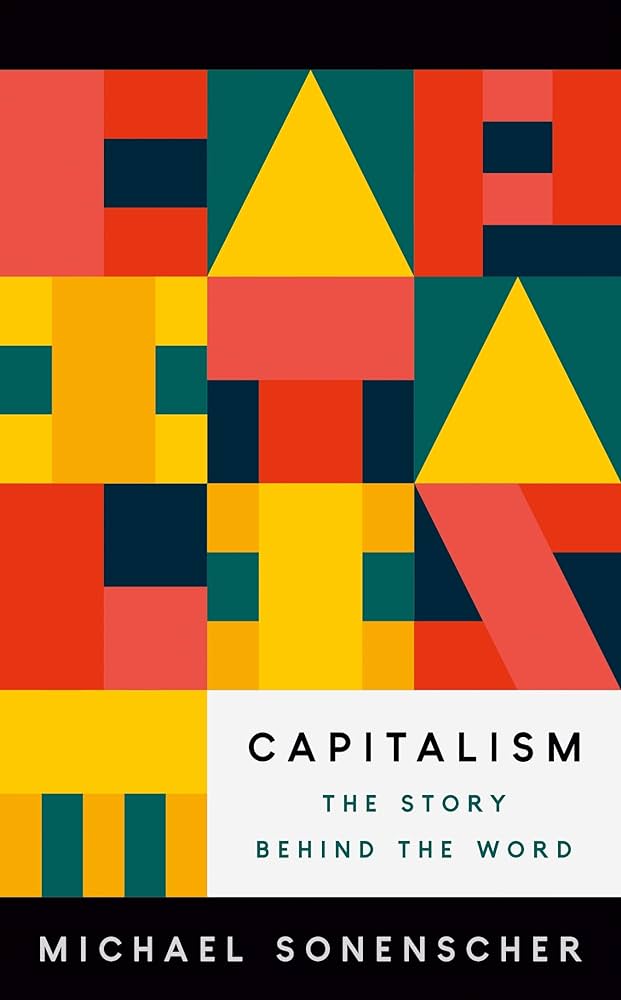
Michael Sonenscher suggests that while capitalism is ‘hard to define’ it is ‘easy to see’ reflecting the ‘range of subjects encompassed in the word’ (page viii). In this tightly written book, he both explains the origins of the word and the historic tension between capitalism and capital. The word has its roots in the ‘capitalistes’ who had lent to finance the wars fought by the French state and so were ‘stockholders rather than capitalists’ (page xii). ‘Capitalism’ as a term grew in popularity after the 1830 revolution, and was associated with ideas of positive and negative liberty and the concern that capitalism led to a level of inequality which could only be resolved by revolution.
Sonenscher argues that the ubiquitous and often confused modern use of ‘capitalism’ has conflated the discussion of what in the eighteenth and nineteenth centuries were thought of as separate concepts. Starting with Adam Smith, Sonenscher identifies the linked concepts of the division of labour and of ‘commercial society’ as being of particular significance (pages 3-6). Once the form of society had developed so that a man’s needs were provided by exchange rather than his own labour, that exchange was dependent on the existence of markets and so ‘commercial society’ was formed. Capital was not the ‘initial or primary component’ of a commercial society – it came next (page 5). This leads him to argue that ‘capitalism’ is not a synonym for ‘commercial society’ and that there is much to be gained from considering them separately (page 7). He points out that capital can be formed in a predatory society by simply taking it; the division of labour is not needed to achieve this. On this basis, the division of labour is the ‘novelty’ which was the basis of commercial society. That required markets and prices which he describes as ‘relentless and remorseless’ which, unlike capital, ‘are not the types of things that can really be owned’ (page 11).
By contrast, ‘capitalism’ as originally understood was a theory of property and one which he suggests may be ‘more fluid than it looks’ (page 14). Property can be socialised while the challenges which flow from the division of labour are more difficult to address. While property can be owned in a variety of ways, a price has only one form. This leads to the view that ‘capitalism’ has unhelpfully come to encompass the division of labour so that while there have been many studies of political systems in capitalist societies, there has been much less thought given to politics in a commercial society (page 16).
Sonenscher divides his book in two parts: problems and solutions. The first is a discussion of how these issues were discussed in the first half of the nineteenth century, arguing that the idea of commercial society turned over time into the problem of capitalism. The second looks at how the challenges of politics in a commercial society were analysed before the idea was subsumed within ‘capitalism’. A key concern among French political economists following 1830 was whether capitalism was compatible with liberty. It was feared that unbounded capitalism would generate levels of inequality that would be inconsistent with justice. Explaining its roots in the financing of war he suggests that ‘capitalism’ acquired its meaning as those ideas moved from an international to a national setting. This built on the belief in France developed by Louis de Bonald and Charles Montesquieu that a commercial society based on consensus could not co-exist with a political society based on union. The idea of capitalism moved politically from the right to the left with the distinction made between the need for capital, and capitalism as a system, joined with a debate over the right to work. This led to Louis Blanc’s ideas about the use of public debt to finance welfare and of using publicly owned capital to defeat capitalism (pages 66-73).
In the second part of the book, Sonenscher considers how political economists from Karl Marx and Adam Smith to Georg Hegel, David Ricardo and Lorenz von Stein approached these issues. The previous discussion provides a new perspective on Marx’s thinking on the relationship between property and the division of labour (page 78). He suggests that there was no ‘Adam Smith problem’, as envisaged in Germany, as his theories of justice and expediency can be reconciled. Hegel’s focus on the role of public authority, and the associated role of public debt and the concept of civil society, built on Rousseau and Montesquieu but also on the thought of Adam Smith. Ricardo’s work on comparative advantage is suggested to be connected to the role of money and debt, while Stein’s focus was on the state’s ability to raise public debt as a means to reconcile the state and civil society (page 150, page 162-164). He concludes by explaining that while capitalism has its origins in a theory of property, the concept of a commercial society, based on the division of labour, was that of a society where individuals are ‘radically dependent on one another’ (page 169). While capitalism was thought to have the capacity for catastrophe, there are alternatives (even if experience suggests they may be unattractive). By comparison, the division of labour is ‘worse’. Once people have become dependent on each other, alternative models are hard to imagine. In that context, the understanding that ‘capitalism’ has come to encompass the division of labour is more than semantics or arcane intellectual history.
This book not only provides a compelling introduction to the distinction between capitalism and commercial society but to a world of intellectual debate which is now little known. While Marx, Hegel, Adam Smith and Ricardo are reasonably widely understood, this book draws attention to a school of French writers such as Louis de Bonald, Louis Blanc and Frederic Bastiat who are generally less widely read, at least by an Anglophone audience. It has the great merit of clarity of argument and is an accessible introduction to a set of issues which can be complex and where there is a formidable body of literature. Excellent notes and bibliography provide a basis for further reading.
Given this book is aimed at the general reader a few more general thoughts arise. While Marx receives attention, it is perhaps briefer than might be expected which at least might deserve explanation. It might also be of interest to understand whether and if so how, the French writers of the first half of the nineteenth century responded to the growing significance of joint stock companies. Finally, a brief glossary might aid a reader new to these issues.
This is an excellent introduction to a complex area of intellectual history. Clearly written and helpfully setting out the argument at the outset, it is a model for an academic introducing challenging ideas to a wider audience. Sonenscher subtitled his work, ‘The story behind the word’ but provides an engaging introduction to a body of work which demonstrates an impressive rigour of analysis; delivering more than he promises in an age of publishing hyperbole is particularly welcome.
‘Capitalism: The Story Behind the Word’, by Michael Sonenscher, was published in 2022 by Princeton University Press (ISBN 9780691238883). 225pp.
 Andrew spent his career with PricewaterhouseCoopers where he was a partner for more than 25 years. He led a variety of the firm’s businesses both in the UK and globally, with a focus on the pharmaceutical industry. He also led the firm’s work on explaining corporate taxation to civil society and the public. He is now studying for a masters in history which he combines with being a trustee at the London Handel Society.
Andrew spent his career with PricewaterhouseCoopers where he was a partner for more than 25 years. He led a variety of the firm’s businesses both in the UK and globally, with a focus on the pharmaceutical industry. He also led the firm’s work on explaining corporate taxation to civil society and the public. He is now studying for a masters in history which he combines with being a trustee at the London Handel Society.